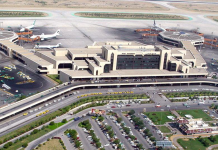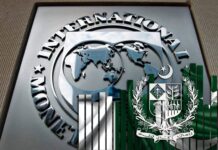ISLAMABAD: Pakistan’s fiscal deficit stood at Rs2.97 trillion in the third quarter of FY2024-25—equivalent to 2.4% of GDP—marking a notable improvement from Rs3.9 trillion or 3.7% of GDP in the same period last year, according to figures released by the Ministry of Finance.
The fiscal consolidation was accompanied by a sharp rise in the primary surplus, which reached Rs3.46 trillion (2.8% of GDP), up from Rs1.61 trillion (1.5% of GDP) in Q3FY24. The improvement reflects robust revenue growth and fiscal restraint across key expenditure heads.
To bridge the fiscal gap, the government resorted to domestic borrowing of Rs1.62 trillion, while net external financing recorded an outflow of Rs78.7 billion. In the same quarter last year, the government borrowed Rs2.95 trillion domestically and Rs19.5 billion externally to finance its budgetary needs.
Total revenue collection during the quarter surged to Rs13.36 trillion (10.8% of GDP), up from Rs9.78 trillion (9.2% of GDP) in Q3FY24. Of this, tax revenue contributed Rs9.13 trillion, while non-tax revenue stood at Rs4.29 trillion.
Direct taxes formed the largest component of tax revenue at Rs4.12 trillion, followed by sales tax at Rs2.86 trillion, customs duties at Rs927.5 billion, and Federal Excise Duties at Rs9.27 billion.
In the non-tax category, the State Bank of Pakistan’s surplus profit contributed a significant Rs2.5 trillion, while the petroleum levy amounted to Rs2.43 billion—up from Rs1.73 billion in the same period last year.
Government expenditure rose to Rs16.13 trillion (13% of GDP), compared to Rs13.47 trillion (12.7% of GDP) in Q3FY24. The entire amount was consumed by current expenditures, with key outlays including Rs10.58 trillion in mark-up payments, Rs1.42 trillion in defence, and Rs672.5 billion in pensions.
Meanwhile, all four provinces reported fiscal surpluses. Punjab led the pack with a Rs441.12 billion surplus, followed by Sindh at Rs395 billion, Khyber Pakhtunkhwa at Rs111.3 billion, and Balochistan at Rs105.79 billion.
The data signals a moderate improvement in Pakistan’s fiscal footing ahead of critical negotiations with the International Monetary Fund (IMF) and the upcoming federal budget for FY26.
























